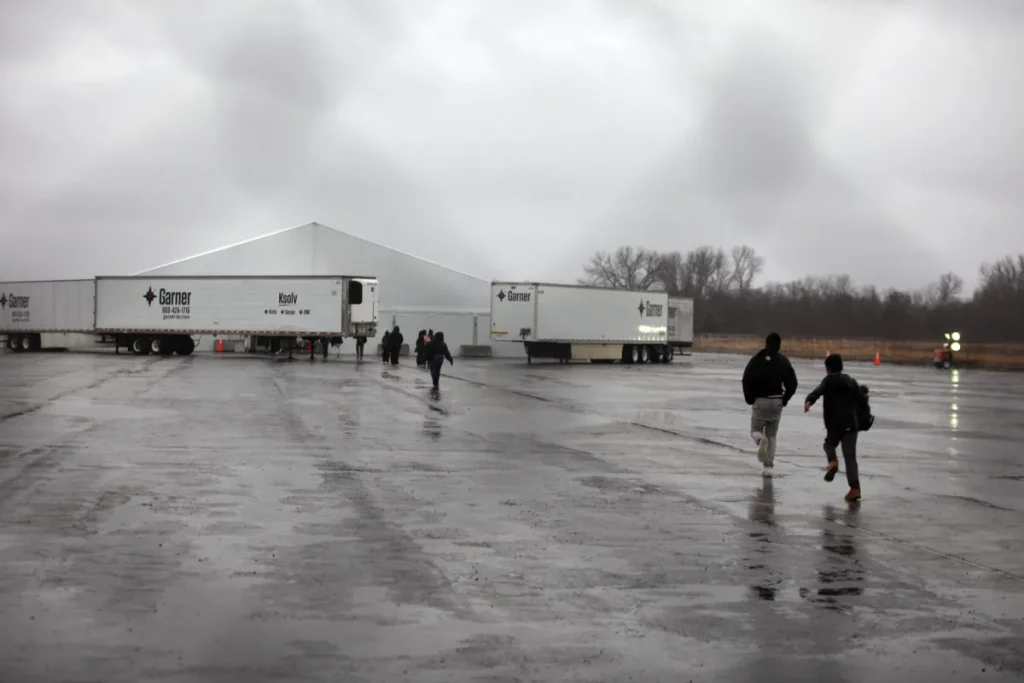New York City has announced plans to shut down a number of migrant shelters, including the large family shelter at Floyd Bennett Field in southern Brooklyn, by January 15, 2024. The closure of this shelter, which is located on federal land, comes just days before President-elect Donald Trump’s inauguration. This move is part of a broader plan to close 24 shelters across the city and surrounding regions by the end of March 2024. The closures will include 15 shelters located within the five boroughs, as well as 10 others across upstate New York in places like Albany, Buffalo, and Poughkeepsie.
The Floyd Bennett Field shelter, which has housed many migrants since it opened last year, is set to be moved out by mid-January. While the city had recently extended its annual lease on the property with the National Parks Service until the end of September 2024, the lease agreement allowed either party to cancel the lease with 90 days’ notice. As a result, city officials gave the required notice on January 9, 2024.
This move follows strong opposition from local Republicans who have long criticized the shelter and pledged to push the incoming Trump administration to terminate the city’s lease. Advocates for migrants have expressed concerns about the safety and wellbeing of those currently residing at Floyd Bennett Field, fearing that the change in administration could lead to heightened threats under Trump’s aggressive immigration policies, particularly regarding mass deportations.
In addition to the closure of the Floyd Bennett Field shelter, the city plans to shut down 24 other shelters across New York City and upstate. Eleven of these shelters have already been closed, including a warehouse shelter at JFK Airport and shelters at locations like the Essence JFK Hotel and the Voyage Hotel in Long Island City. Another 14 shelters are expected to close by the end of March 2024, as part of the city’s ongoing effort to reduce its reliance on temporary shelters for migrants.
The decision to close these shelters comes as New York City has seen a steady decline in the number of migrants living in city shelters. Since December 2023, the shelter population has dropped by 10,000 people, down from a peak of more than 68,000 in December 2022. Mayor Eric Adams credited the reduction in shelter numbers to the city’s effective management strategies, including the implementation of 30- and 60-day time limits on shelter stays for migrants, as well as its case management efforts. He also thanked the Biden administration for restricting the number of border crossings, which he said had helped lower the demand for shelter space in the city.
“Thanks to our smart management strategies, we’ve turned the corner, and this additional slate of shelter closures we’re announcing today is even more proof that we’re managing this crisis better than any other city in the nation,” Adams said. “We’re going to continue looking for more sites to consolidate and close, and more opportunities to save taxpayer money, as we continue to successfully manage this response.”
Despite the closure announcements, one notable shelter—the Hall Street megashelter in Brooklyn, which houses around 4,000 migrants in a complex of warehouses—was not included on the list of closures. This shelter has sparked significant opposition from local residents in the Clinton Hill area, with neighbors pushing for a reduction in the shelter’s size. Some have also called for the city to end its lease with the property owner, RXR, which expires in March 2024.
Noah Levine, a spokesperson for the Adams administration, declined to comment on whether the city planned to renew the Hall Street lease. However, he did mention that the city is exploring options to reduce the size of the facility.
In addition to these closures, city officials are planning to gradually phase out the current migrant shelter system. The city is aiming to return control of the shelter operations to the Department of Homeless Services by the summer of 2026. However, the specifics of how this transfer will occur remain unclear.
As New York City continues to manage the migration crisis, these shelter closures are part of a broader effort to reduce the city’s reliance on temporary housing and ensure a more sustainable response. Though the shelter numbers have declined, officials will need to continue balancing the needs of vulnerable migrant populations with the city’s resources. The ongoing changes highlight the growing tension between local, state, and federal policies and the complex challenges of managing migration in a major urban center like New York City.

